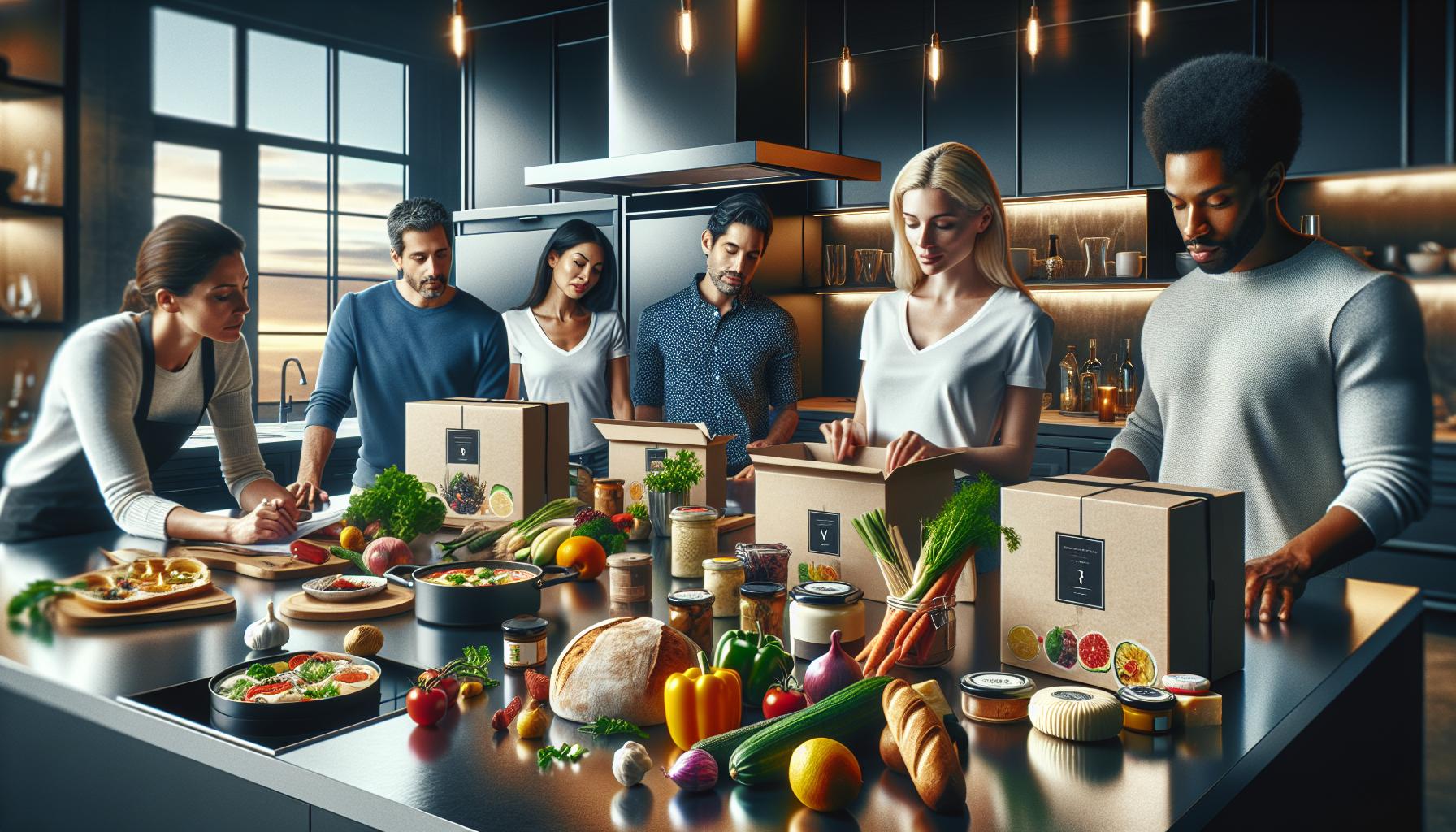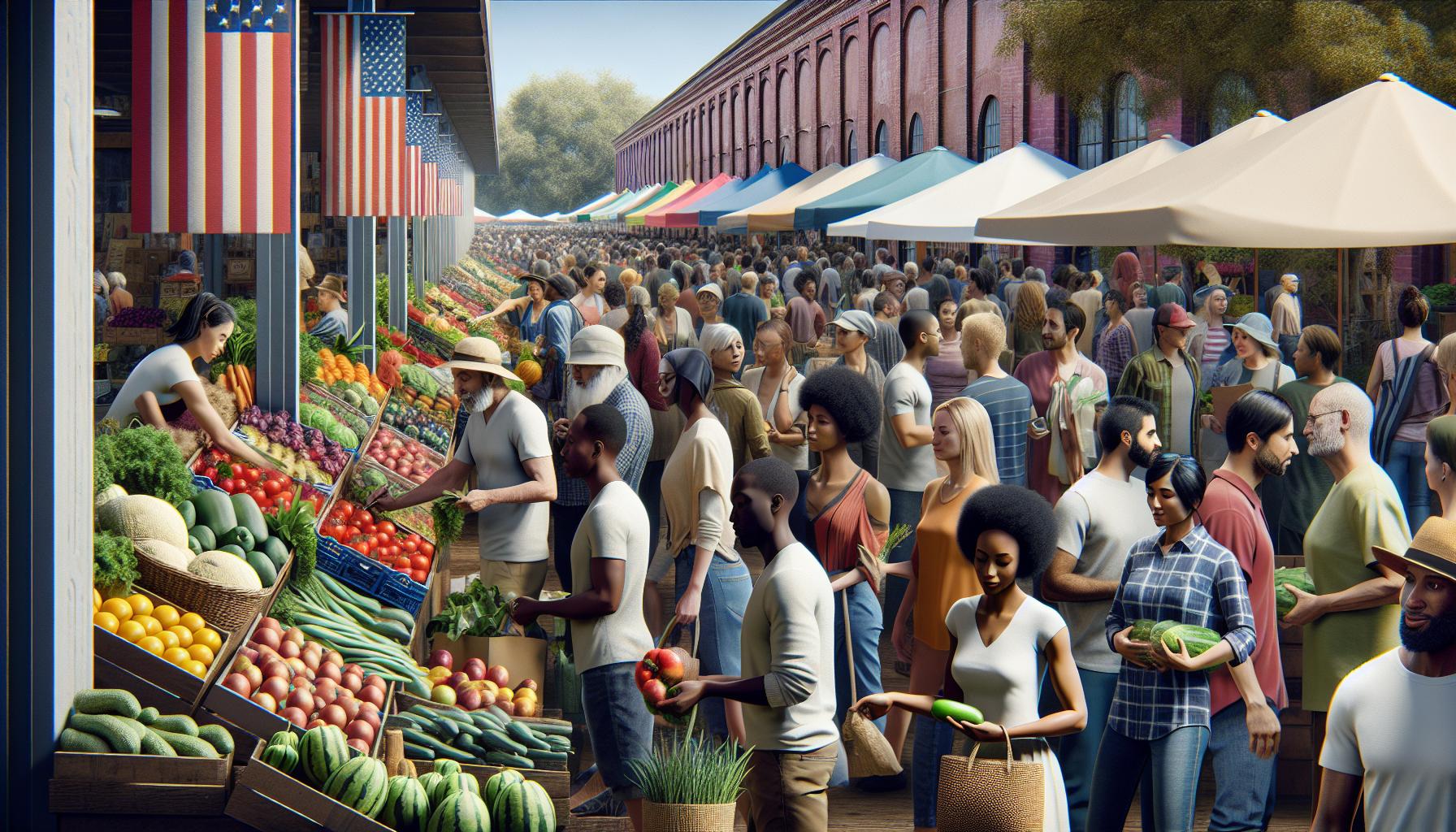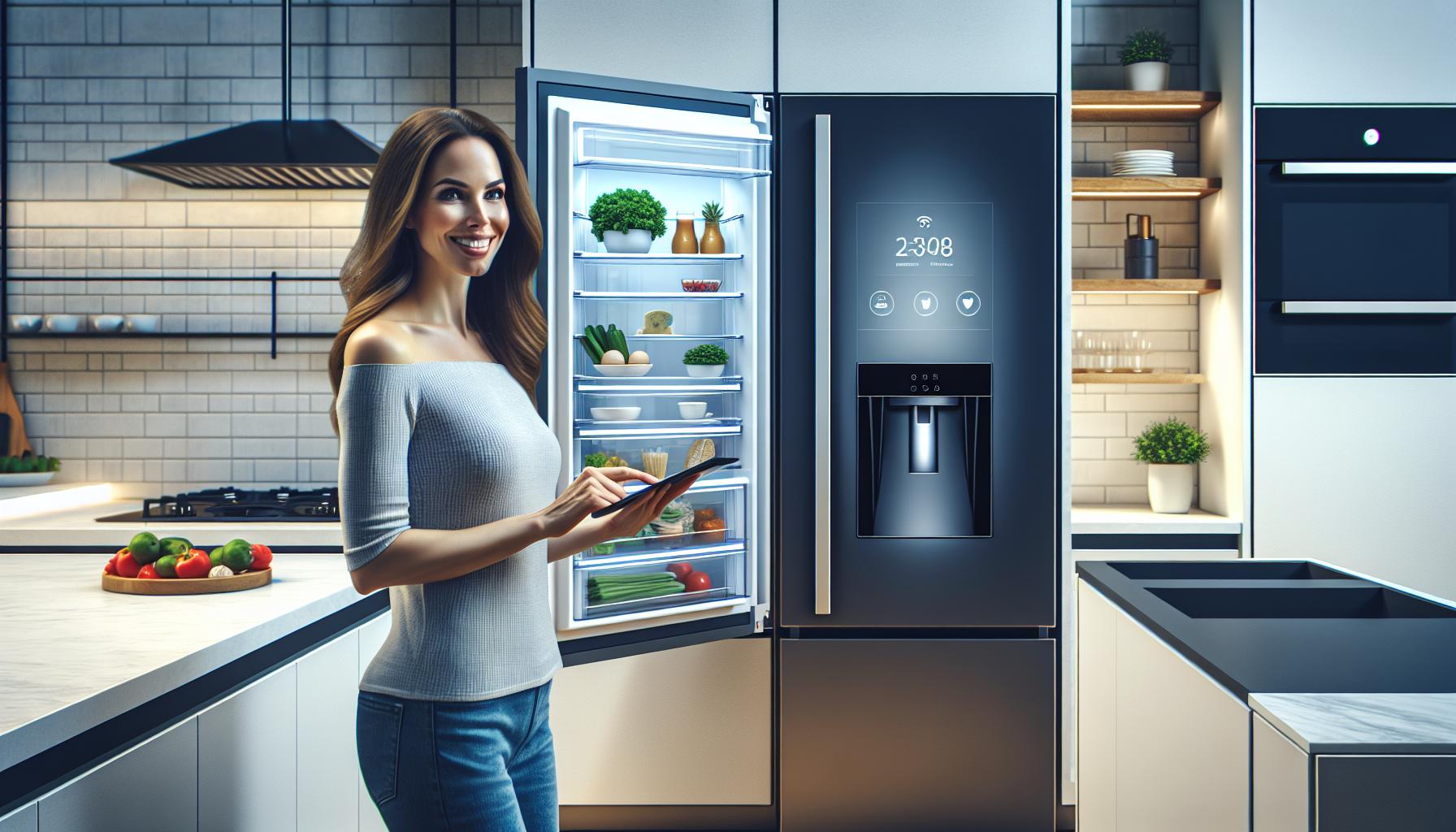The food industry has undergone a massive digital transformation as consumers increasingly fill their virtual shopping carts with everything from gourmet snacks to ready-to-cook meal kits. E-commerce food sales have skyrocketed, with more people embracing the convenience of ordering groceries and specialty foods from their smartphones.
Today’s digital food marketplace is buzzing with innovative trends that are reshaping how people shop, cook and eat. From AI-powered personalized nutrition recommendations to sustainable packaging solutions, food retailers are cooking up new ways to satisfy tech-savvy consumers’ appetites. As more brands jump onto the digital bandwagon, standing out in this increasingly crowded space requires staying ahead of the latest e-commerce food trends that are taking the industry by storm.
Ecommerce Food Trends
Ecommerce Food Trends sales reached $364 billion globally in 2024, marking a 25% increase from the previous year. Digital grocery platforms have transformed from convenience-based services to essential shopping channels for millions of consumers.
Consumer Behavior Shifts in Digital Food Retail
Ecommerce Food Trends behaviors demonstrate significant changes in purchasing patterns across demographic groups. Millennials lead digital grocery adoption with 78% making regular online food purchases. Consumer preferences show a 45% increase in subscription-based meal planning services compared to traditional one-time purchases. Regular online shoppers spend an average of $267 monthly on digital food purchases, focusing on:
- Premium specialty ingredients from global suppliers
- Local farm-to-table produce boxes with seasonal selections
- Ready-to-cook meal kits with pre-portioned ingredients
- Bulk pantry staples through auto-replenishment programs
- Voice-activated shopping lists with smart reordering
- Augmented reality product visualization
- Real-time inventory tracking at local stores
- Personalized dietary recommendations
- Digital loyalty programs with instant rewards
- One-click checkout options for faster transactions
| Mobile Shopping Metrics | Percentage |
|---|---|
| Mobile Transaction Share | 73% |
| User Growth Rate | 156% |
| In-App Purchase Rate | 68% |
| Cross-Platform Usage | 84% |
Direct-to-Consumer Food Brands Taking Center Stage

Direct-to-consumer (DTC) food brands have transformed the online marketplace, capturing $89 billion in sales during 2024. These digital-first companies bypass traditional retail channels to connect directly with consumers through e-commerce platforms.
Subscription Meal Kits and Recipe Boxes
Subscription meal services generate $12.5 billion annually in the U.S. market, with 28% of consumers actively enrolled in at least one food subscription program. Leading providers HelloFresh, Blue Apron, Home Chef deliver pre-portioned ingredients paired with step-by-step recipes. The average subscriber spends $186 monthly on meal kits, choosing from 15-20 weekly rotating menu options. Premium add-ons like specialty proteins, wine pairings, dessert boxes boost order values by 35%. Data shows 64% retention rates for subscribers who customize their boxes based on dietary preferences like keto, paleo, vegetarian or gluten-free plans.
Specialty Food Marketplaces
Online specialty food marketplaces reported $24.7 billion in sales for artisanal products, small-batch items, international ingredients. Platforms like Goldbelly, Mouth Foods, Thrive Market connect consumers with 2,500+ independent food producers nationwide. Top-selling categories include craft chocolates, single-origin coffee beans, imported olive oils, artisanal cheese selections, rare spice blends. Analytics reveal 42% of specialty food purchases occur during gifting seasons, with an average order value of $95. Flash sales featuring limited-edition collaborations drive 3x higher conversion rates compared to standard listings.
Sustainable and Ethical Food Commerce

Environmental responsibility shapes modern e-commerce food trends, with 67% of consumers prioritizing sustainable practices in their online food purchases. This shift drives innovation in packaging materials, supply chain optimization, and local food distribution networks.
Eco-Friendly Packaging Solutions
Ecommerce Food Trends retailers implement biodegradable packaging solutions to reduce environmental impact. Recent data shows a 43% increase in businesses adopting plant-based packaging materials like cornstarch containers, mushroom-based insulation, and seaweed-derived wraps. Major food platforms report an 85% reduction in plastic usage through reusable containers and minimal packaging designs. Advanced tracking systems monitor packaging waste, resulting in a 34% decrease in overall packaging material usage. Companies leverage AI-powered algorithms to optimize package sizes, reducing empty space by 28% and cutting shipping emissions.
Local Food Movement Goes Digital
Digital marketplaces connect consumers directly with local farmers through integrated e-commerce platforms. Regional food hubs process 5,000+ weekly orders from local producers, reaching customers within a 100-mile radius. Online farmer’s markets generate $876 million in annual sales, supporting 12,500 small-scale producers across digital channels. Smart logistics networks enable same-day delivery of fresh produce from local farms to urban consumers. Data analytics help farmers predict demand patterns, reducing food waste by 38% through precise harvest scheduling. Mobile apps facilitate direct producer-consumer relationships, with 64% of users ordering exclusively from local vendors.
Technology Transforming Food E-tail

Digital innovations revolutionize food e-commerce through advanced technological solutions. These developments enhance customer experiences while streamlining operations for retailers.
AI-Powered Personalization
Artificial Intelligence algorithms analyze shopping patterns to create tailored food recommendations with 94% accuracy. Machine learning systems track 2,300+ data points per customer, including purchase history, dietary preferences, cooking habits. Advanced AI platforms integrate real-time inventory data with predictive analytics to suggest alternative products when preferred items are unavailable. Smart recommendation engines process nutritional information, allergen data, flavor profiles to match consumers with compatible products. Personalization tools increase average order values by 35% through targeted cross-selling of complementary ingredients, recipes, kitchen tools.
Smart Kitchen Integration
Connected kitchen devices sync with e-commerce platforms to automate grocery ordering based on consumption patterns. Smart refrigerators equipped with internal cameras track 87% of food inventory changes, triggering automatic reordering when supplies run low. IoT sensors monitor 15 different storage conditions including temperature, humidity, expiration dates to maintain food quality. Voice-activated assistants process 67% of grocery list additions through natural language commands. Digital recipe platforms connect with smart appliances to adjust cooking times, temperatures based on specific ingredients purchased online. Integration between kitchen devices generates $4.2 billion in automated replenishment orders annually.
Social Commerce in the Food Industry
Social Ecommerce Food Trends transforms food retail by integrating shopping capabilities directly into social media platforms. Digital food sales through social channels reached $37.8 billion in 2024, marking a 156% year-over-year increase.
Food Marketing Through Social Platforms
Instagram leads social commerce for food brands with 89% of food-related purchases originating from its platform. Pinterest drives 45% of specialty food discovery through visual recipe pins connecting directly to e-commerce checkout. TikTok’s food content generates 2.3 billion monthly views resulting in $892 million in direct sales through integrated shopping features.
| Platform | Monthly Active Food Shoppers | Average Order Value | Conversion Rate |
|---|---|---|---|
| 428 million | $64 | 4.2% | |
| 156 million | $82 | 3.8% | |
| TikTok | 312 million | $43 | 5.6% |
Live shopping events on social platforms average 6,500 concurrent viewers with a 34% purchase rate. Food influencers generate $2.4 billion in affiliate sales annually through product recommendations reaching 875 million followers. User-generated content featuring food products receives 3.7x higher engagement rates than branded content generating 28% more sales conversions.
Same-Day Delivery and Rapid Fulfillment
Ecommerce Food Trends food retailers leverage advanced logistics networks to deliver fresh groceries within 2 hours of ordering in metropolitan areas. Automated fulfillment centers process 15,000 orders daily using robotics systems that pick pack orders 4x faster than manual methods.
| Delivery Metrics | Performance Data |
|---|---|
| Average Delivery Time | 1.8 hours |
| Order Accuracy Rate | 99.3% |
| Same-Day Coverage | 85% of urban areas |
| Processing Speed | 426 orders/hour |
| Customer Satisfaction | 94% approval |
Dark stores located strategically throughout cities enable 15-minute delivery windows for essential grocery items. Micro-fulfillment centers operate 24/7 with AI-powered inventory management systems maintaining 99.8% stock accuracy.
Smart routing algorithms optimize delivery paths by:
- Coordinating multiple orders within specific geographic zones
- Calculating real-time traffic patterns to reduce transit times
- Matching order volumes with available delivery personnel
- Monitoring temperature controls for perishable items
Partnerships with gig economy platforms expand delivery capacity by:
- Integrating with 23,000 independent drivers
- Providing flexible delivery windows throughout the day
- Maintaining delivery availability during peak hours
- Offering specialized handling for fragile items
Mobile apps enable customers to:
- Track orders in real-time with GPS monitoring
- Receive automated delivery notifications
- Schedule specific delivery time slots
- Rate delivery experiences directly
These rapid fulfillment innovations generate 78% higher customer retention rates compared to standard shipping options. Merchants offering same-day delivery report a 156% increase in average order value.
The food Ecommerce Food Trends landscape continues to evolve at a remarkable pace driven by technological innovation and changing consumer preferences. From AI-powered personalization to sustainable practices the industry has transformed how people discover purchase and receive their food.
The fusion of social commerce mobile shopping and advanced logistics has created a seamless digital food shopping experience. As consumers embrace these convenient solutions retailers are adapting with enhanced features and faster delivery options to meet growing demands.
The future of food e-commerce looks promising with continued growth in direct-to-consumer brands subscription services and specialty food marketplaces. This digital revolution isn’t just changing how we shop for food – it’s reshaping the entire food industry ecosystem for years to come.



